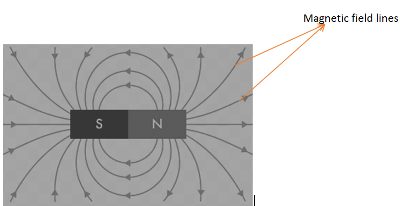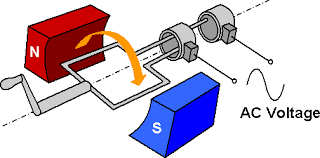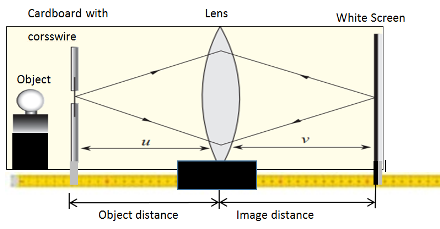Category: Physics
-

Understanding Magnetic Fields: 5 Properties and Characteristics
Magnetic field is a region around the magnet where the magnetic force is experienced. Magnetic field is represented by lines called magnetic field lines which also show direction of the magnetic field.
-
Mutual Induction as in Electromagnetic Induction
Mutual induction is a phenomenon in physics where a changing magnetic field in one coil of wire induces a voltage across another nearby coil. When the magnetic field passing through one coil changes, it induces a voltage in the other coil, according to Faraday’s law of electromagnetic induction.
-

An a.c Generator
An Alternating current (a.c) Generator is also known as the alternator. An a.c generator is a device or machine that converts mechanical energy energy into electrical energy by rotating conductors through magnetic fields. Figure below illustrates a simple generator made of curved permanent rectangular magnetic poles, slip rings, conductor made into a loop and carbon…
-

Thin Lens Ray Diagrams: Drawing and Analysis
To locate the image, you draw two of the three important rays from tip of the object towards the lens. The first ray parallel to principal axis and through principal focus and the second ray from the tip of the object through the optical center or the third that passes through the principal focus before moving…
-

Isaac Newton: One Great scientist of all times
Sir Isaac Newton was an English scientist active as a mathematician, physicist, astronomer, alchemist, theologian, and author who was described in his time as a natural philosopher.
-
A concise Introduction to thin lenses
Other topics Introduction to thin lenses involves general description about properties of thin lenses. A lens can be defined as a piece of curved glass or plastic that makes things look larger, smaller or clearer when you look through it. In human eye, one component is a lens and so we can also define lens…
-

Focal length from lens formula
By use of mirror formula that had been derived earlier, the unknown focal length of a lens can be determined experimentally. We describe the experiment here and explains how to extract the the focal length from the relationship.
